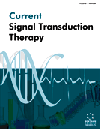
Full text loading...
We use cookies to track usage and preferences.I Understand
Transcription factor PPAR-γ is predominantly found in adipose tissue, liver, and brain. PPARs form heterodimers, interact with ligands, and regulate the expression of the genes of the PPAR-γ downstream regulatory pathways. PPAR-γ is critical in regulating many physiological processes, including adipogenesis, glucose metabolism, fatty acid metabolism, energy homeostasis, and inflammation. This review is on the functions of PPAR-γ and how dysregulation of activity or expression of PPAR-γ can lead to obesity and Alzheimer's disease (AD). The PPAR- γ agonist inhibited the downregulated pathways, such as Wnt/β-Catenin and JAK-STAT pathways, both involved in activating NF-kB. PPAR-γ has a significant role in the APOE (Apolipoprotein E) gene expression, which reduces reducing obesity, inhibits amyloid aggregation, prevents hyperphosphorylation of tau, and inhibits dysregulation of autophagy. This review provides a perspective on the intricate interplay between PPAR-γ, obesity, and AD, focusing on the molecular mechanisms and potential therapeutic implications.

Article metrics loading...

Full text loading...
References


Data & Media loading...

